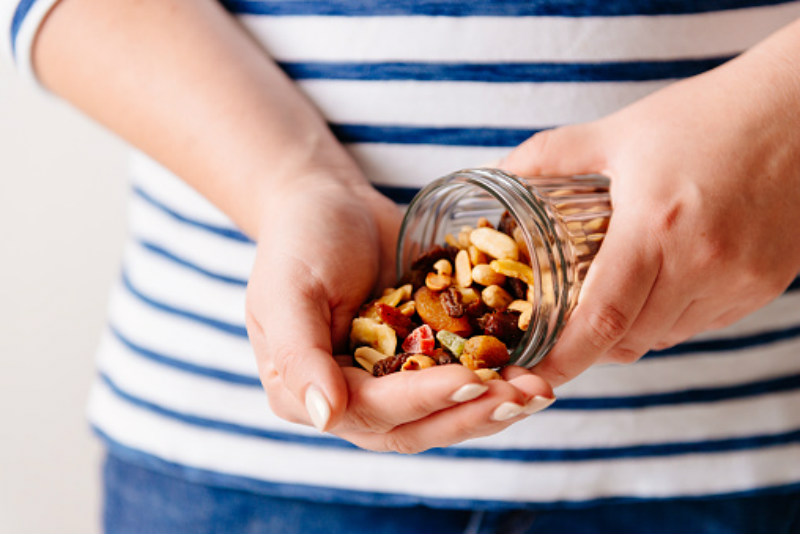Are doctors forced to ‘rat snack’ because of crazy hours? What are the risks?
MDlinx Mar 15, 2024
It’s no secret that shift work can impact when and how you eat. Research shows, for example, that people who work odd hours are more likely to eat irregular and more frequent meals—and to snack at night.

This might explain why ‘rat snacking,’ in which people consume whatever type of food they can scavenge, has gained traction on social media platforms like TikTok, especially among people who work outside traditional hours. In many videos, people can be seen munching on whatever they can get their hands on, from almonds smashed between leftover cheddar cheese slices to chips crumbled into a half-eaten container of hummus.
Dietary patterns under the influence of rotational shift work schedules: a systematic review and meta-analysis. Advances in Nutrition. 2023;14(2):295-316.
While ‘rat snacking’ might seem harmless, dietitians say that, in some cases, it can lead to overconsumption and nutritional deficiencies. Michelle Routhenstein, MS, RD, CDECS, CDN, a registered dietitian-nutritionist who specializes in cardiometabolic health at EntirelyNourished, says that snacks often lack the variety and nutritional density found in well-balanced meals. “If ‘rat snacking’ replaces balanced meals, individuals may miss out on essential nutrients, leading to deficiencies,” Routhenstein tells MDLinx.
While convenience is important for shift workers when choosing what to eat, she notes that health should remain the top priority. Here’s what to know about ‘rat snacking,’ including when and how it can be done safely.
What are the potential health risks of ‘rat snacking’?
Snacking is not inherently unhealthy; when done thoughtfully, it can provide an energy boost and help people meet daily intake recommendations for various minerals, fibers, and vitamins.
Enriquez JP, Gollub E. Snacking consumption among adults in the united states: a scoping review. Nutrients. 2023;15(7):1596.
Suggested servings from each food group. www.heart.org. (2023, December 18).
For those who work long, irregular hours, however, it can be tempting to reach for snacks—or whatever’s nearby—when hunger strikes instead of carefully planning out meals and snacks ahead of time. This would “not be a beneficial way of eating for people [who] work long hours, as they need foods that will sustain them for longer periods of time,” says Michelle Saari, MSc, RD, a registered dietitian-nutritionist with EHProject.
People who perpetually snack risk consuming more calories than they need. They may end up choosing high-calorie, low-nutrient snacks, including processed food and sweet treats, which can negatively impact their overall health. “Constant grazing on snacks throughout the day can lead to excessive calorie consumption, contributing to weight gain and potential health issues such as obesity and metabolic syndrome,” says Routhenstein.
Enriquez JP, Gollub E. Snacking consumption among adults in the united states: a scoping review. Nutrients. 2023;15(7):1596.
Research suggests that shift workers face a 23% increased risk of developing obesity or becoming overweight compared to people who work during the daytime. Another report found that nurses tend to eat more saturated fat during evening and night shifts, which may contribute to chronic diseases such as heart disease or type 2 diabetes. Past research has consistently identified an association between shift work and increased incidence of cardiometabolic disease.
Huggins CE, Jong J, Leung GKW, Page S, Davis R, Bonham MP. Shift workers’ perceptions and experiences of adhering to a nutrition intervention at night whilst working: a qualitative study. Sci Rep. 2022;12:15487.
Lin T, Guo YL, Gordon CJ, et al. Snacking among shiftwork nurses related to non‐optimal dietary intake. J Adv Nurs. 2022;78(11):3629-3640.
D’Annibale M, Hornzee N, Whelan M, Guess N, Hall W, Gibson R. Eating on the night shift: A need for evidence‐based dietary guidelines? Nutrition Bulletin. 2021;46(3):339-349.
The other risk of excessive snacking is that potato chips and cookies, which tend to have poor nutrient profiles, may begin to replace meals. “If you don’t focus on getting all the foods and nutrients that you need for longevity, just giving into cravings all day, you may not realize you’re missing some essential nutrients,” says Saari.
Enriquez JP, Gollub E. Snacking consumption among adults in the united states: a scoping review. Nutrients. 2023;15(7):1596.
Here’s how to make sure your snacking stays healthy
This doesn’t necessarily mean that it’s time to cut out all snacking. Evidence suggests that the quality of snacks is more impactful than the quantity or frequency of snacking.
Planning or measuring out your snacks ahead of time can help prevent overconsumption, Routhenstein adds. Look for snacks that contain fiber, healthy fats, or protein, as they can make you feel satiated and energized. Fresh fruits, like apples, oranges, bananas, and grapes; chopped vegetables, including carrots, celery, and cucumbers; whole-grain crackers and bread; and proteins, such as nuts and seeds, are nutritious snack options, per the Centers for Disease Control and Prevention. When snacks are healthy and nutritious, they can improve shift workers’ performance, especially during long working hours, research shows.
CDC. Planning meals and snacks. Centers for Disease Control and Prevention.
Oriyama S, Yamashita K. Effects of a snack on performance and errors during a simulated 16-h night shift: A randomized, crossover-controlled, pilot study. PLoS One. 2021;16(10):e0258569
The goal, according to Routhenstein, is to use snacking to complement, rather than replace, your meals. She recommends aiming for three balanced meals a day and using snacks as a tool to help curb hunger when your energy levels dip. “After that, if ‘rat snackers’ want to indulge and eat like rats, they can because they’ve met their nutrition goals already,” Saari says.
CDC. Planning meals and snacks. Centers for Disease Control and Prevention.
-
Exclusive Write-ups & Webinars by KOLs
-
Daily Quiz by specialty
-
Paid Market Research Surveys
-
Case discussions, News & Journals' summaries